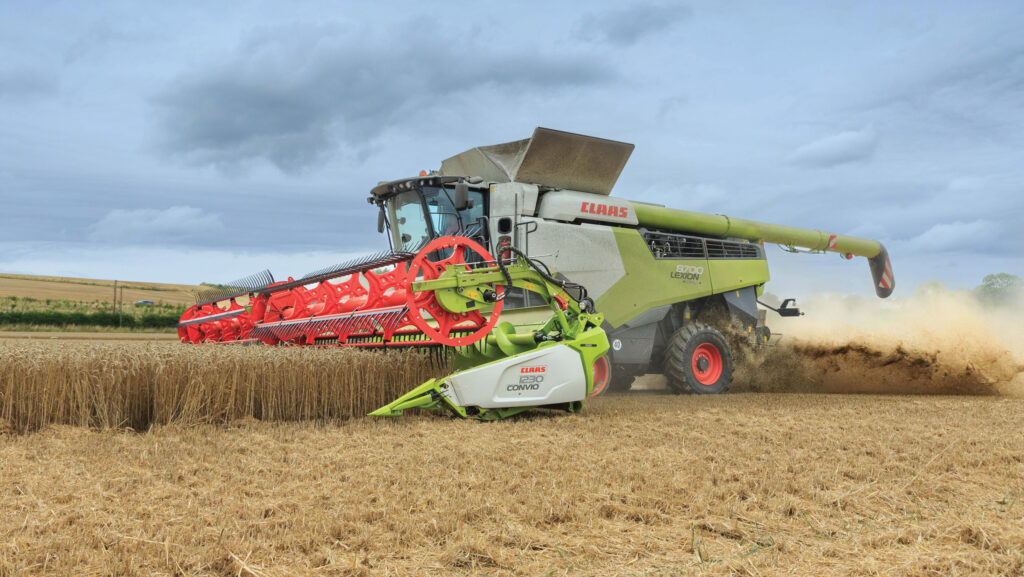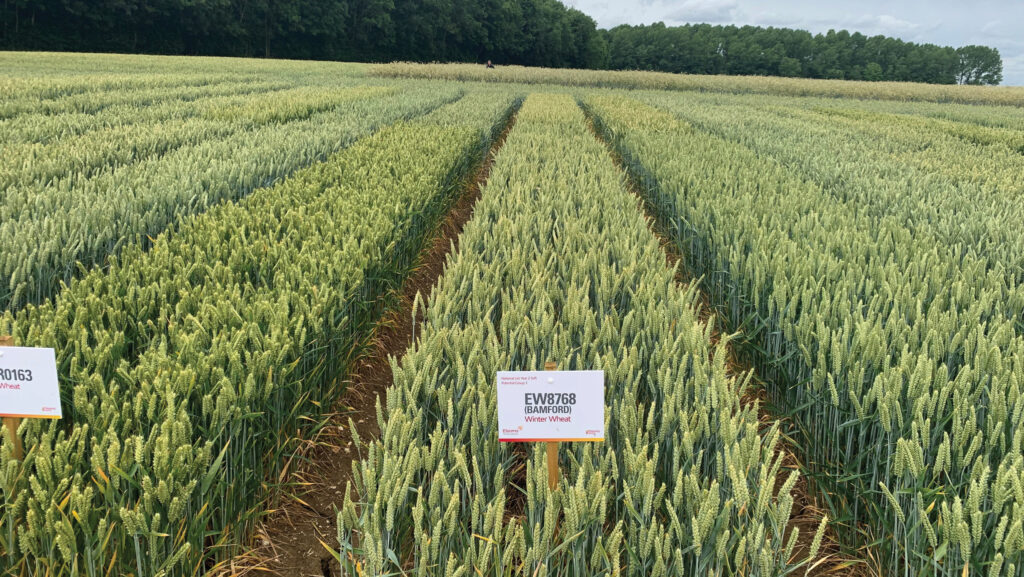New group 3 wheat tipped to rekindle shrinking sector
 © Tim Scrivener
© Tim Scrivener The arrival of Bamford, Elsom’s new soft Group 3 wheat, is being seen as a significant development for a market sector which has been on a stark decline since 2020.
Having fallen from almost 10.8% of the certified seed market to just 1.6% in the space of four years, the Group 3 biscuit wheat category took a pounding as new variety introductions either failed to excite or succumbed to disease.
That situation is all about to change, believe commentators, who expect newcomer Bamford to have wider appeal than traditional biscuit wheat markets – given its combination of very high yields, strong agronomics and good grain quality.
See also: Advice on getting the most from Dawsum winter wheat
It is also suitable for export, having achieved a UKS classification, and has been rated medium for distilling – giving market flexibility and extending its geographic reach into Scotland.
Added to the AHDB Recommended List for 2024/25, Bamford has a UK treated yield of 106%.
Not only does that put it head and shoulders above other Group 3 varieties, it also makes it one of just three winter wheat varieties on the list at that level of output.
Market flexibility
As a result, it will also be grown for feed, predicts the seed trade, who highlight Bamford’s untreated yield of 92%, just 1% behind Extase, as another sign of the variety’s relevance to today’s more sustainable farming systems.
“Bamford’s recommendation is good news,” says Jim Knightbraid, seed business development manager at Frontier Agriculture.
“It comes on to the list in a market sector which has really suffered recently, but it also opens up opportunities beyond Group 3. It’s a variety that suits the mood.”
Bamford has performed well in the last two years of Frontier trials, he confirms.
“Last year, in a high pressure season for disease, it was the highest yielding variety in our untreated trials, giving 10.27t/ha. That was 113% of the trial average.”
He notes that there’s enough seed availability for Bamford to take 7-8% market share in its first commercial year.
“Early seed sales have been strong. The variety will also impact feed wheats and Group 2 thanks to its higher yield, just as much as it will revitalise Group 3.”
Bamford grain quality
- Protein content: 10.9%
- Protein content (milling spec): 11.6%
- Hagberg: 239 seconds
- Specific weight: 78.5kg/hl
The UKFM verdict finds that over three years of testing, Bamford has shown good specific weights and gluten quality that meet the Group 3 criteria.
It is also classified as a UKS soft wheat for export and as is rated as “medium” for distilling.

© Elsoms
Agronomic profile
The two previous Group 3 variety stumbling blocks – low yields and septoria resistance – have been addressed.
Bamford is not a Cougar cross and brings in some genetic diversity, so there are no concerns about the durability of its septoria resistance.
A septoria rating of 6.7 is good, rather than outstanding, while it has a 7 for yellow rust and 6s for mildew, brown rust and eyespot.
It scores 7s for resistance to lodging – both with and without plant growth regulators – with no impact of lodging seen last year.
Given the increased frequency of extreme weather events, there’s no room for complacency with any variety, and plant growth regulators should be used.
The only thing missing from Bamford is orange wheat blossom midge resistance, continues Jim.
“That might have a bearing on the wider rotation if you’re growing other varieties, such as Dawsum and Extase, which are also without it.”
Bamford buy-back contract
Frontier Agriculture has recently launched a buy back contract for Bamford with up to a maximum £20/t premium, reports Jim Knightbraid of Frontier Agriculture.
Covering the majority of England and into the Scottish Borders, the contract specifications are standard for the Group 3 sector, 107% protein, 74 hl/kg specific weight and 180 Hagberg.
The contract is for supply into biscuit milling and wheat distilling markets. The wheat is destined to go to Frontier end homes in either Manchester or Tilbury.
Growth habit
Fairly slow to grow in the autumn, Bamford “kicks on” in the spring and has an erect growth habit, Jim reports.
“It does have potential for September drilling. In challenging autumn planting conditions, where herbicide applications are a struggle, variety choice can help.
“Bamford has been reasonably competitive against grassweeds in our work. So it may have a place with growers wanting to avoid a repeat of last autumn’s wet conditions by drilling a bit earlier.”
David Huish of Dalton Seeds agrees that Bamford is a significant introduction to the Group 3 sector, but also predicts that it will find other markets.
“With such a high yield, it’s a no-brainer,” he says. “There’s no need to pigeonhole it as a biscuit wheat as it suits other outlets too.”
Good wheat varieties that yield well are always in demand and Bamford is right up there, alongside Beowulf and Champion on 106%, he points out.
“Soft wheats have declined in terms of market share, with the hard feeds dominating, but Bamford could change that picture. The fact that it is suitable for distilling means that it could also have a place in Scotland.”
Case study: Russell McKenzie, Cambridgeshire grower and consultant
The 27ha seed crop of Bamford has taken all that the weather has thrown at it this year, reports Bedfordshire grower Russell McKenzie.
“So far, so good,” he says. “In a difficult year for most crops, at this stage, it appears to be one of our better performing ones.”
He hopes that Bamford will take him back to the heydays when good Group 3 varieties featured heavily on the farm.
“We are close to mills that like soft wheats, but the Group 3 variety choice has been so poor recently.
“As a result, I’ve been getting a premium with the likes of Skyscraper. If it lives up to expectations, Bamford could become a mainstay here, bringing more yield and a better disease profile than others.”
With a keen interest in variety performance and having always investigated varieties coming through the RL system, Russell was impressed by Bamford’s consistency in trials, and its suitability as either a first or second wheat.
He has also noticed its spring vigour in the strip trials he conducts on the farm. “It’s not far behind Extase on spring vigour. It also has a good eyespot rating.”
He likes the combination of high yields and Group 3 grain quality in Bamford. “We’ve been waiting for a solid Group 3 variety for a while so I really hope it performs.”

